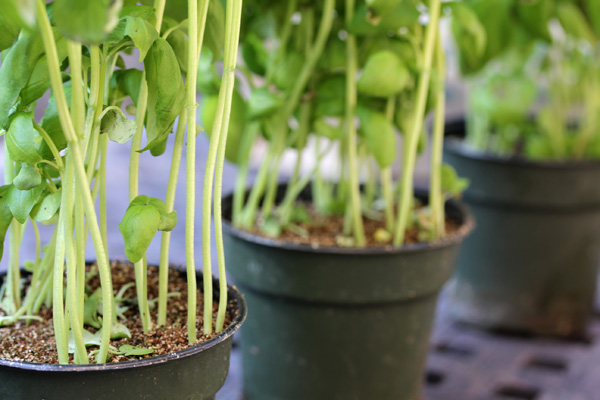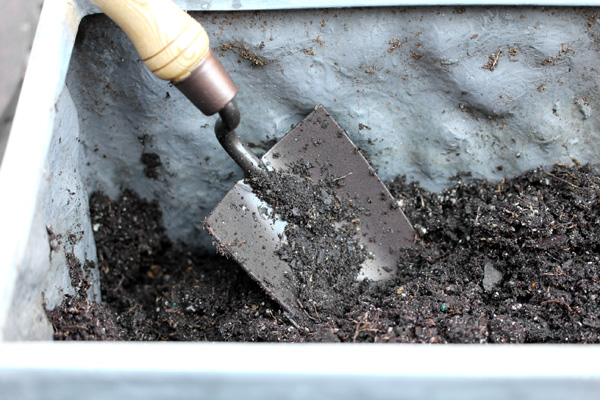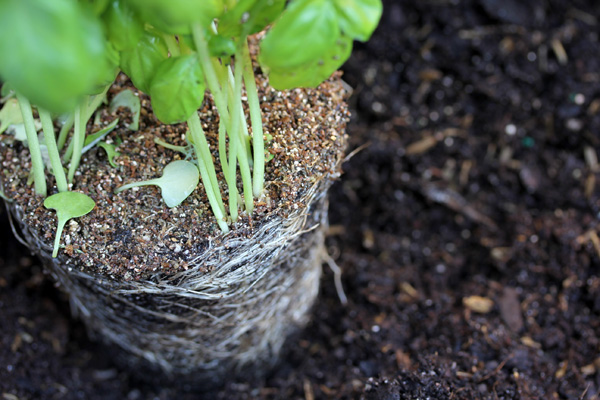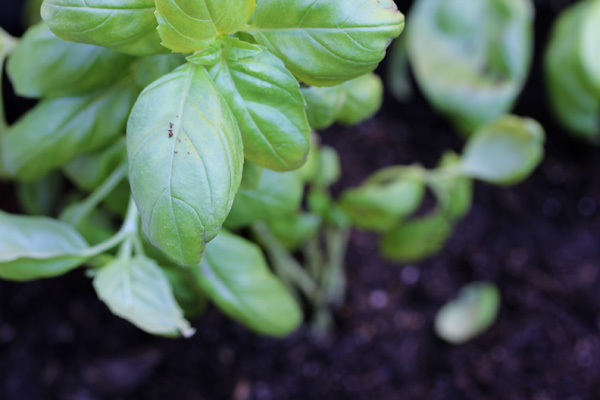(make ahead) grow your own basil and make basil infused oil

Anyone can plant their own basil. Anyone. Yep, even you, person who lives in a tiny apartment. You do not need a big yard, a garden, or even an outdoor space. All you need is sunlight, a little watering, a lotta love and you've got fresh basil.

If you're a newbie to gardening, planting a pot of basil is the perfect way to get you started. If you're a gardening pro, then you already know that having a basil plant around makes for lots of wonderful and uber-fresh tasting meals all spring and summer long.
how to grow your own basil
Before Planting: Basil can grown indoors or outdoors, but make sure you have a spot that has a lot of light. Basil loves at least 6 hours of sunshine a day. If you are planting outside, be sure that the last frost has past. Basil likes the warmth (50ºF and above) so make sure it is consistently warm before planting.
Planting: The easiest way to get your basil plant going quickly is to buy a seedling that is grown already. Look for organic basil that has bright green, healthy looking leaves. You also want to make sure the long roots are attached which will allow you to re-plant the basil at your home. If you choose to plant basil from seeds, be sure to plant the seeds in a paper or fiber pot with plenty of room for the long roots to grow in. Do not use a seed tray, their long roots do not like that.
When you are ready to transfer your grown basil to a pot or to the ground, be sure to wet the roots. This will make it easy to remove from the container. If you are not planing in the ground, make sure the pot you are using has good drainage. Terra-cotta and ceramic make good planter choices for herbs. Place the basil plant(s) into the ground or pot and cover the roots with dry soil. If planting multiple plants, make sure they are at least 12 inches apart. Then lightly water the soil, being careful not to over-soak the roots.
Growing Tips: Regular watering is key. Although, be sure to not water too much because herbs and basil do not like to be soaked, just nice and damp. Be sure to trim back the leaves (and use them in your cooking) often. This will allow the basil to grow back nice and full, and continue to grow throughout the season. Lastly, be sure to watch the weather if you have your basil growing outdoors. It is to your advantage to have them in pots because if it gets cold, really windy, or if it is raining a lot you can bring your basil inside to protect it.
Harvesting: The best part about having a basil plant around is that you can pull off the leaves whenever you would like to incorporate basil into a meal. Trimming off the leaves actually helps it to grow, so do not be afraid use and trim often.
Storing: Once the leaves are removed form the stem and root, they will only last a couple of days. Unlike other herbs, it is not recommend to freeze or dry out basil. One way you can store extra basil is by making basil oil .... recipe below :)

how to make basil infused olive oil
what you will need:
1 cup of loosely packed, fresh basil leaves
a clove of garlic (optional)
a mortar & pestle
3 cups of fresh, high quality, extra virgin olive oil
a glass mason jar or olive oil container for storing
method:
Place the basil leaves and garlic (if you're using) in a mortar with some of the oil and using the pestle gently rub it around until the basil releases it's oils. Place the basil and garlic into the glass container with the remaining oil. Store in a place with sunlight for 2-3 weeks. Then, strain the basil and garlic from the oil and pour the oil back into the same glass container. Use on salads, pasta, in sauces, over vegetables, or however you chose. When not using, store the basil oil covered in a cool, dark place. It will last for about 6 months.

